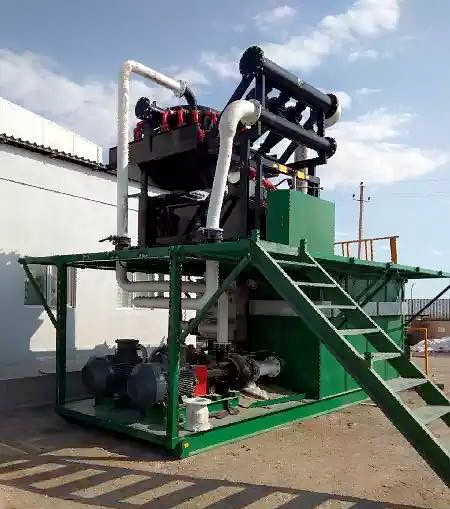1. When selecting the treatment equipment to treat the waste slurry at the construction site, the characteristics of the waste slurry treatment equipment and pipeline arrangement, the site occupied by the equipment, the processing capacity per unit time, the concentration of the waste slurry and the related measuring instruments and the proficiency of the operators should be taken into consideration to select the treatment equipment that can operate continuously and with a high degree of automation, low price of the equipment and small site occupation. equipment. Based on the characteristics of the waste mud of mud and water balance pipe jacking construction, it is required to select the equipment system with strong processing capacity, low installed power, low energy consumption of the system, the water content of the treated soil is below 40%, and the filtered water can be recycled and reused.

1)The waste slurry treatment method described in this paper starts with collecting the waste slurry and preparing flocculant solution according to the physical and chemical properties of the waste slurry, adding it to the equipment box in proportion to the homogenization and mixing. After homogenization, the slurry is automatically flocculated in the automatic flocculation device. After the slurry is flocculated, the thickener is dewatered by gravity, and the water is discharged into the water receiving tray and the mud is sent to the lower filter press. The concentrated mud enters the filter press and then automatically undergoes a progressive peristaltic process to squeeze out the water again. After extrusion, the mud enters the high-pressure filter press and is dewatered again. Finally, the mud is pressed into a mud cake and then spit out at the discharge port and conveyed to the designated soil collection pit by belt conveyor. The whole process is completed in one continuous operation without any interruption. The key to the whole treatment process is the application of flocculants and control of dewatering process, and the technical points are described below.
2)Application of flocculants Different types of flocculants have their own optimal dosing levels, and deviation from the optimal dosing level will not only cause waste of flocculant materials, but also lead to a decrease in flocculation efficiency. Under-dosing will lead to insufficient flocculation, while over-dosing will lead to "re-stabilization" of the liquid to be flocculated, i.e., as the flocculant dosing increases, the turbidity (a factor reflecting the flocculation effect) will not continue to decrease after decreasing to a certain level, but will increase as the flocculant dosing increases, typically manifesting as liquid colloid This is typical of the destabilization of the liquid colloid particles by adsorption and re-stabilization. The environment in which the optimal flocculation effect can be achieved varies from one flocculant to another. When treating waste slurry with inorganic flocculants or organic polymer flocculants, the appropriate application method should be determined according to the chemical-physical environment in which the flocculants are suitable to be used.
